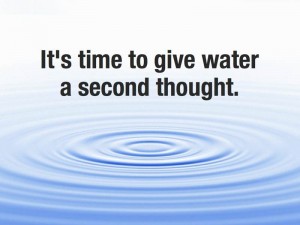Here I would like to review the series and look at the way people commented the individual posts, before concluding with a few lines about the experience.

Renewable energy renewing the Earth
In my first post I introduced the idea of environmental cost. This was the measurement that I wanted to use to address the issue of pollution, and more specifically that produced through energy use.
I tried to avoid the term ‘clean energy’, as I feel this overlooks certain aspects of all forms of production. Modern solar panels for example may provide clean energy from the sun but they themselves present issues during their manufacturing and disposal phases.
Another point I hoped to raise is that the problem needs to be viewed from a realistic standpoint. We are not all going to convert to a zero emissions life overnight any more than we are going to return to being a hunter and collector society that lives in caves. The world will continue to operate more or less as it does now, and it is through this framework that the problem should be addressed.
The first comment I received contained the following line from Vicky, and it really is worthy of note:
“I believe that each of us can help a lot in improving the health of our planet, the only problem is that we have great vision but no action. Why don’t we act first and through that action we start making some vision?” This is echoed by the quote from Gandhi that I used to open the first post, and could really be a manifesto for the series.
The second post was about cutting fuel emissions from transport systems, and it received a couple of interesting comments. Darci commented that even cutting emission by 30% (referring to the commercial use of Kites on ships) would be a great improvement, and I must agree with her. Neil’s comment included the following lines that are worth thinking about:
“It seems to me that over the past decade the builders of internal combustion engines have made some great breakthroughs in generating more energy from their engines with the same amount of input and we have seen the KW output of many engines jump significantly. It would be good to see these same producers working backwards to produce smaller engines that produce an adequate amount of power from a minimal amount of fuel.” An extremely astute comment I would say.
Post 3 entitled Cleaner Energy Production was one of the most commented of the series. I think this is because the technology described is on the verge of becoming commercially available, and because solar panels are now an every day piece of urban furniture.
The article also provoked a series of comments lead by the following from Custom Items:
“These are a great bunch of suggestions. It’s really sad that we all what we need and what is right but can’t do anything about it. I’ve always felt that the government was taking sides with the big corporations. In this world of ours, money and power talks.”
This obviously provoked discussion with the other commenters in agreement with the sentiment, some seeming to suggest that development is hindered by large corporations and governments and that although the people recognize the need for change they may be incapable of achieving it.
Not all doom and gloom though and I for one am optimistic and agree with some of the brighter outlooks expressed.
Post 4 was all about a report published by the Royal Society for Engineering in which they looked at possible ways of artificially cooling the planet. Again many comments were left, a couple of which raise issues that should be addressed.
The post involves the problematic debate around global warming. Two comments really show the diversity of belief that surrounds the issue, even though not taking radical standpoints. The following comment was made by Shane Ryans:
“In my opinion the earth has gone through many different cycles, throughout its lifetime. The earth has gone through ice ages so why would there not have been, for lack of a better word, “hot” ages. What makes today so different from the past. We are just going into yet another cycle. Now that being said, I am sure that we as a race have made the circumstances different and added to the problem and sped up the process, with all the different chemicals and air pollutants we have introduced into our environment. I do hope that scientists can come up with a viable solution”.
Although Shane does not make the line that humans do not contribute to the problem, many people do, and go on to argue that the greenhouse effect does not exist. From their point of view any change is merely a product of nature. People that espouse this line have powerful lobbies, and invest large sums of money to promote their line to the point that the debate has become a business, and dirty tricks and smear campaigns abound. See this page on Wikipedia for plenty of information and links to further reading
Returning to the post a second comment made by Virtual Stock Trading runs as follows, the edit is mine but you can see the original comment where it was left:
“I don’t think there is any doubt on global warning…….. But the process is very gradual and will not significantly affect anyone living today.”
I cannot agree with the final line. Global warming is affecting communities all over the world as we speak. Sea levels are rising and threatening the very survival of some of theMaldivesIslands, flooding is rife in low-lying countries and London has to thank the Thames Barrier to avoid Joe Strummer’s classic prediction. And a simple look at its use tells a story, it was closed four times in the 1980s, 35 times in the 1990s, and 80 times since 2000.
Post 5 was a review of inventions and power generating machines that profess to generate free or pollution free energy. It did not generate the number of comments that the previous posts managed, but Samantha returned to the non support from governments and big business argument once more:
“Actually, there are so many inventions nowadays that can actually lessen our cost and pollution as well. However, they are having problems of getting support from our government. Of course, this body is after of money from businesses like big petroleum companies.”
From a personal point of view writing the series gave me great satisfaction. I have all the articles on a single file and it looks like a small book! I wrote 2 of the articles before posting the first, as Christopher suggested, and it was a very good idea. I wanted to reply to each comment and that took a lot of time, so I found it quite a strain researching while the series was running (each post took about 6-8 hours to research and write).
I found all of the comments interesting, and thank everyone who took the time to post. I did not have the problem that I sometimes have of people missing the point. I do not like to express my arguments too openly and rely on a bit of intuition, and sometimes this is lacking and I find comments that express the opposite of what I wanted to convey. This was not the case during the series, and that pleases me.
I can definitely recommend the experience, and will undoubtedly write another.
UPDATE: Jonny has compiled a fantastic PDF publication of his series which contains every article in the series, and the responses each article got. You can view it on the blog here Can We Improve the Health of the Planet? A series by Jonny Hankins.






